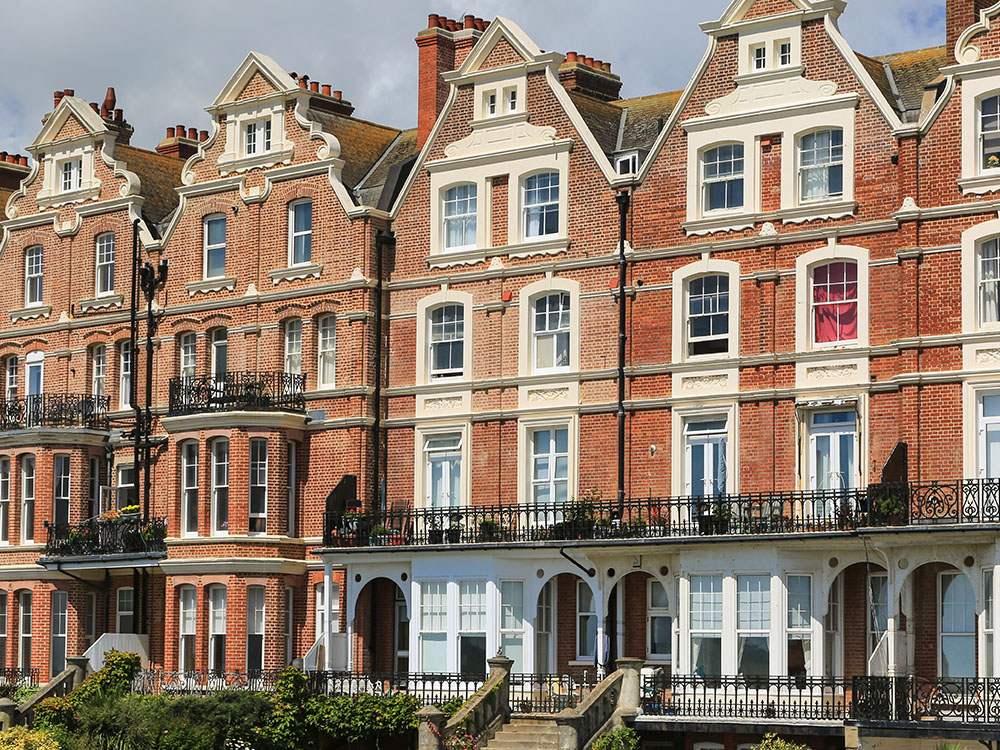On this page
Thinking of buying a property with a short lease? Why might you want a lease extension? What is a lease extension? Who can extend a lease? What is a typical lease extension cost and how do you calculate a lease extension? How is the lease extension process funded? What are the two processes of lease extensions? What are the necessary steps to extend a lease? What are the implications of extending a lease?Thinking of buying a property with a short lease?
Properties with short leases are often flats or apartments and they're normally priced below market value for a quick sale.
Short-lease properties are priced below the market value because the buying pool is smaller, as buyers are typically unable to obtain a mortgage where the lease is less than 80 years - so that just leaves cash buyers.
However, flats with long leases are a valuable asset, so what happens when you’re unable to get a mortgage on a property with only a short lease left? A lease extension could well be the answer and you could use a bridging loan to both purchase the property and extend the lease.

Why might you want a lease extension?
As the lease term of a property decreases, the value of the lease also decreases making it more difficult to market and sell. Whilst this offers property investors and first time-buyers with an opportunity to purchase a ‘cheap’ flat, it also can make the property unmortgageable effectively stopping the would-be buyer from raising finance for the purchase.
Most high street mortgage lenders will decline to offer a mortgage on a property where the lease remaining is less than 80 years. However it’s not just property purchasers who might find themselves with this problem. Sellers of properties with short leases often fail to realise the true market value of the property because they’re only able to attract ‘cash-buyers’ as those who require a mortgage are unable to do so.
As Stephen Clark of Finbri Bridging Loans comments, “Buying a flat with a short-lease can offer both first-time buyers and property investors a good opportunity of buying below market value and then, relatively quickly, increasing the value of the property.”
In the UK, extending the lease on a flat or house can be possible if specific requirements are met. Lease extensions can be achieved by negotiating directly with the landlord or applying to the Leasehold Valuation Tribunal (LVT).
This article gives a comprehensive overview of the process of extending a lease, the steps involved and how the cost is calculated.
What is a lease extension?
A lease extension extends the time until the property reverts to the landlord's ownership by adding more years to the lease.
The owner of the leasehold property (also known as a leasee) will formally request the extension of a lease from their landlord, which is also known as a 'section 42 notice'. The landlord has two months to reply, if acknowledgment is not received the tenant can then apply to the Leasehold Valuation Tribunal (LVT) if the terms of an agreement cannot be met.
Who can extend a lease?
Qualifying leaseholders must have a lease term of fewer than 21 years remaining on the lease or have owned the property for at least two years. Then will have the ability to extend their lease providing they have met the eligibility criteria. This encompasses both residential and commercial leases.
What is a typical lease extension cost and how do you calculate a lease extension?
The costs and fees depend on the property's value, the lease's duration, and the negotiation period. The price includes four overall aspects:
- Legal fees: This could potentially cost upwards of £2,400 for any fees and additional costs
- Freeholders valuation and legal expenses: These fees can cost upwards of £3,000
- 3% SDLT surcharge: If the premium exceeds £40,000 and you own or co-own more than one home, you will additionally be subject to the 3% SDLT fee.
The 'marriage value' is the potential increase in the value of the property that would need to be paid as a premium to the freeholder. Depending on how many years are still left on the original lease at the time the application to extend is completed, the marriage value amount itself can vary greatly.
How is the lease extension process funded?
There are several ways to fund the lease extension process, including:
Personal savings:
The cheapest method of borrowing is always from using savings. If this is a viable option available then personal savings can be used to fund the lease extension process. This can be a good option if the necessary funds are readily available. However, it is essential to remember that there is no guarantee that the freeholder will agree to the proposed changes.
Borrowing from a bank:
One option is to borrow from a bank or other financial institution. This can be a viable option if the leasehold on the property is already owned and the leaseholder has equity in the property, as they may be able to borrow against this. However, when looking to buy a flat with a short-lease (under 80 years) it's highly unlikely that a mortgage can be obtained, so sourcing alternative finance in order to purchase the property would be required.
Bridging loan:
Another option is to use a bridging loan. Bridging finance can be used to both purchase property with short leases remaining as well as funding the lease extension itself. This can be a useful option if the necessary funds aren’t readily available to either purchase the property or to extend the lease.
Whilst bridging loans do have higher interest and fees associated with them when compared to traditional mortgages, they are intended only as a short-term finance solution - to bridge a gap in finances until the leaseholder can either refinance the loan by way of a traditional mortgage or through the sale of the property.
Bridging loans are often used where the risk profile of the financing is greater than high street mortgage companies are willing to be exposed to.
Lease extensions are a great way to increase the value of a leasehold property and it can be achieved in a number of ways. It's important to get professional advice on how to fund this process and which is the most appropriate option based on individual circumstances.
Our team of bridging specialists can help you better understand your options when it comes to properties with short leases, so why not schedule a free, no obligation call?
What are the two processes of lease extensions?
Formal lease extension:
The formal lease extension process, sometimes known as the "statutory way," involves the leaseholder giving the freeholder a legally required notification as set out in the Leasehold Reform Act 1993. Formal lease extensions add an additional 90 years onto the current lease term and reduce the ground rent to zero (often called a peppercorn ground rent). The premium calculated for the lease extension, the process and the timeline are governed by statutory parameters. You cannot extend to more or less than an additional 90 years.
Informal lease extension:
Without giving the required notice, the leaseholder bargains with the freeholder and can negotiate a length of lease term of up to 999 years. In this instance the freeholder has the freedom to set their rates and potentially even raise the ground rent during that time.
What are the necessary steps to extend a lease?
Step 1: Informing the freeholder
The first step in extending the lease on a flat is to write to the freeholder, informing them of the intention. This should be done well before the expiry of the current lease, as significant time may be taken to reach an agreement.
Step 2: Negotiating with the freeholder
The next step is to negotiate with the freeholder. This will involve discussing the terms of the new lease, including the length of time for which it will be valid and the amount of rent that will be payable. It is important to remember that the freeholder is under no obligation to agree to any proposed changes, so it is essential to be prepared to compromise.
Step 3: Applying to the Leasehold Valuation Tribunal.
If an agreement cannot be reached with the freeholder, it is possible to apply to the Leasehold Valuation Tribunal (LVT) for a determination. This process can be lengthy and costly, so it is vital to be sure that there is no other way to reach an agreement before taking this step.
Can a landlord refuse to extend a lease?
If the leaseholder goes through the ‘formal lease extension’ process, and has met the requirements stated previously, the freeholder cannot refuse to extend a lease. However, if the ‘informal extension’ process has been followed the freeholder can deny an extension of the lease. For example, a leaseholder that has less than two years of ownership cannot follow the formal statutory process with the ‘informal’ process being the only viable option. In this case, the freeholder can withdraw at any given time.
There are several implications of extending the lease on a flat, both positive and negative. These should be considered carefully before deciding to extend.
What are the implications of extending a lease?
Positive implications:
- The value of the flat is likely to increase as the length of the lease is increased. This can make it easier to sell the property in the future.
- It may be possible to negotiate a lower rent for the new lease.
Negative implications:
- The process of extending the lease can be lengthy and costly.
- There is no guarantee that the freeholder will agree to any proposed changes.
Furthermore, once the lease has been lengthened, it cannot be shortened again without the agreement of the freeholder.
Final thoughts…
Leasehold extensions can be a complex and time-consuming process, so it is critical to seek professional advice before proceeding. However, if the necessary steps are followed, particularly the formal lease extension route and you have a suitable source of finance, it is possible to extend the lease on a flat and enjoy the associated benefits.





